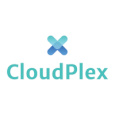3 Reasons Why You Don’t Need To Learn Kubernetes
in Kubernetes

Kubernetes paved the way to build cloud native systems, in which services are implemented using small clouds of containers. Kubernetes created an enormous opportunity to add and adopt new services to make the use of containers easier, faster, and far more productive. Since it was open-sourced by Google in 2014, Kubernetes has become the de-facto standard for containers and microservices orchestration. It leverages the power of containers while simplifying the management of services and machines in a cluster.
Kubernetes clusters abstract core computing resources from the users, allowing them to deploy applications to an entire cluster as opposed to a specific server. Containers are instances that contain the application code and its dependencies and run necessary processes on a host (bare metal or virtual) machine. In addition, they can be customized and built to required specifications, allowing isolated processes, networking, memory, graphics capability, users, etc.
Containers make going from application development to deployment without portability or reproducibility concerns. Developers can package an application and all its dependencies, libraries, and configuration files needed to execute the application into a container image. A container is nothing but an instance of an image that can run. Container images can be drawn from a container registry and deployed wherever the container runtime is available: on your local machine, on-premise server, or in the cloud.
As the container market continued to grow and many workloads transitioned to fully production-grade containers, it was clear cluster admins needed something more than a mere container engine. Kubernetes overcomes many limitations of a traditional container engine. For example, with a Kubernetes cluster, admins can use multiple containers with shared resources, monitor running containers, replace dead containers, move containers to improve utilization, autoscale container instances to handle the load, make the container services easily accessible and connect containers to a variety of external data sources.
The Kubernetes architecture enables a single administrator to manage thousands of containers running simultaneously. With workload portability and orchestration of containers across on-site deployments to public or private clouds and to hybrid deployments in between, Kubernetes clusters have indeed replaced VMs for wide scale deployments and themselves become the new standard.
Do developers still need to learn Kubernetes?
Kubernetes is gradually replacing virtual machines in most environments. Kubernetes while retaining all the goodness of virtual machines, address the shortcomings. Kubernetes is cost-effective as it results in more efficient resource utilization than hypervisors and VMs.
Since containers are very lightweight, they consume fewer CPU cycles and memory registers to run. Kubernetes is also portable and can run on Amazon Web Services (AWS), Microsoft Azure, Google Cloud Platform (GCP), and on-premise. Users can move workloads without having to redesign applications or completely rethink infrastructure, which helps standardize on a platform and prevents vendor lock-in.Containers are similar to virtual machines as they are also stored as images. Container images are much smaller and more portable and feasible to use than virtual machine images for the aforementioned reasons of not requiring an operating system installation as part of the image.
This small footprint and overall portability of containers compared to virtual machines is key to the success of KubernetesIt’s common when one starts working with containers to still think of them as virtual machines and focus on the concept of virtualization. I mean virtualization is simple, to begin with. Developers are not expected to be well-versed with the nuances of virtualization. They are fine as long as they know how to create and delete virtual machines with a number of tools available to manage VMs. Whether Microsoft Virtual PC, VMWare Workstation, or Oracle VirtualBox, these tools make creating virtual machines, allocating resources, installing applications and OS, and deleting a VM image a simple task with assistive UI elements.
Likewise, developers moving from one standard to another, or virtual machine to Kubernetes in this case, are not supposed to learn Kubernetes inside-out. Since Kubernetes is fast emerging as a standard, learning it thoroughly would be a waste of the time they should be investing in learning other programming frameworks.
Is Kubernetes in the same league as VM in terms of sophisticated tools already?
Even if you’re a little familiar with Kubernetes, then you know despite emerging as a standard, it lacks the sophistication of the tools and interfaces available for VM management. Developers, starting with Kubernetes experience an early setback when they realize setting up a Kubernetes cluster isn’t exactly straight forward with the default Kubernetes UI and they have to learn quite a bit of it before they could start writing code. While managed Kubernetes service providers such as Amazon and Google offer a much-needed relief in the form of Elastic Kubernetes Services and Google Kubernetes Engine respectively, their interfaces still leave a lot to be desired especially if you’re coming from VMware Workstation or vSphere. You are expected to configure a lot of things yourself from the command line. That means going through the elongated documentation which varies from one cloud vendor to another. Developers seldom have spare time at their disposal.
CloudPlex offers the right Kubernetes services for developers
When virtualization was the standard, you got it right by choosing the right set of tools. With Kubernetes emerging as the one, things shouldn’t be very different.
As a developer, you can make things in your direction by choosing the right tools and Kubernetes is no expectation. While Vanilla Kubernetes can take hours to set up a cluster, managed Kubernetes services are still a lot of work for developers new to the environment and cloud vendor.CloudPlex offers an intuitive drag and drop canvas to design, develop, test, configure, deploy, monitor, and manage Kubernetes applications and render the need to learn Kubernetes redundant. An intuitive drag-n-drop interface means you can design your Kubernetes application visually without the need to manually create and validate YAML manifests and config files.
CloudPlex automatically generates and validates all the required artifacts.CloudPlex dashboard debugs and troubleshoots your applications and works with Prometheus, Grafana, Jaeger, and Kiali.
There is no need to switch IDE’s or your Cloud development environment, Cloudplex not only integrates with your CI tool but also deploys in your dev cloud.CloudPlex offers a rich visual interface that makes application deployment on any managed Kubernetes cluster including GKE, AKS, EKS, DOKS, IKS, and OpenShift child’s play.
How about user-managed Kubernetes cluster or on-Premise (bare metal) Kubernetes cluster? CloudPlex works there too.
Click here to create your new Kubernetes cluster from scratch in just a few minutes.
Asad Faizi
Founder CEO
CloudPlex.io, Inc
asad@cloudplex.io
Get similar stories in your inbox weekly, for free
Share this story:

Cloudplex
Founder and CEO of Cloudplex - We make Kubernetes easy for developers.
Latest stories
HIPAA and PCI DSS Hosting for SMBs: How to Choose the Right Provider
HIPAA protects patient data; PCI DSS protects payment data. Many small and mid-sized businesses now …
The Rise of GPUOps: Where Infrastructure Meets Thermodynamics
GPUs used to be a line item. Now they're the heartbeat of modern infrastructure.
Top Bare-Metal Hosting Providers in the USA
In a cloud-first world, certain workloads still require full control over hardware. High-performance computing, latency-sensitive …
Top 8 Cloud GPU Providers for AI and Machine Learning
As AI and machine learning workloads grow in complexity and scale, the need for powerful, …
How ManageEngine Applications Manager Can Help Overcome Challenges In Kubernetes Monitoring
We tested ManageEngine Applications Manager to monitor different Kubernetes clusters. This post shares our review …
AIOps with Site24x7: Maximizing Efficiency at an Affordable Cost
In this post we'll dive deep into integrating AIOps in your business suing Site24x7 to …
A Review of Zoho ManageEngine
Zoho Corp., formerly known as AdventNet Inc., has established itself as a major player in …
Should I learn Java in 2023? A Practical Guide
Java is one of the most widely used programming languages in the world. It has …
The fastest way to ramp up on DevOps
You probably have been thinking of moving to DevOps or learning DevOps as a beginner. …
Why You Need a Blockchain Node Provider
In this article, we briefly cover the concept of blockchain nodes provider and explain why …
Top 5 Virtual desktop Provides in 2022
Here are the top 5 virtual desktop providers who offer a range of benefits such …











